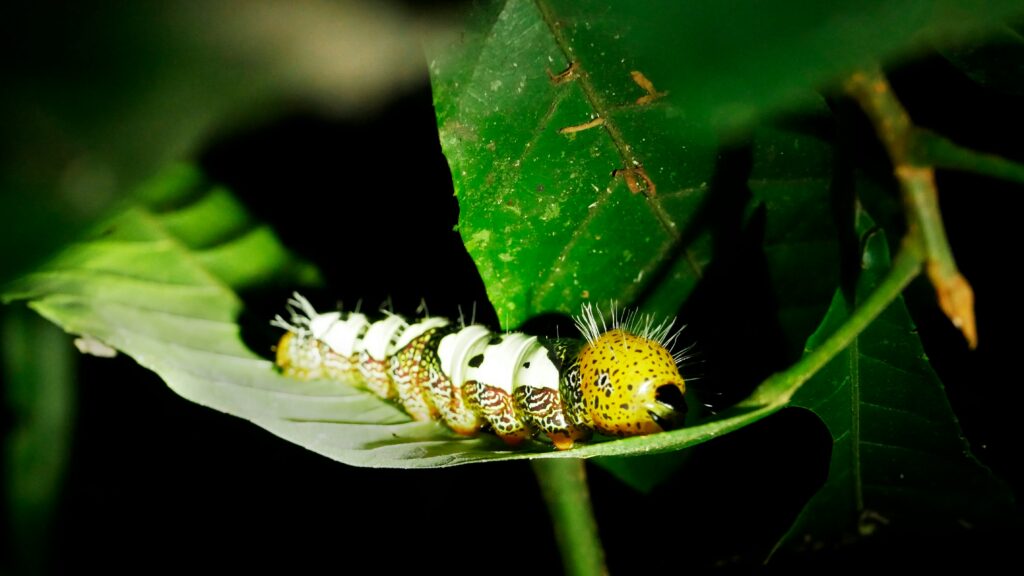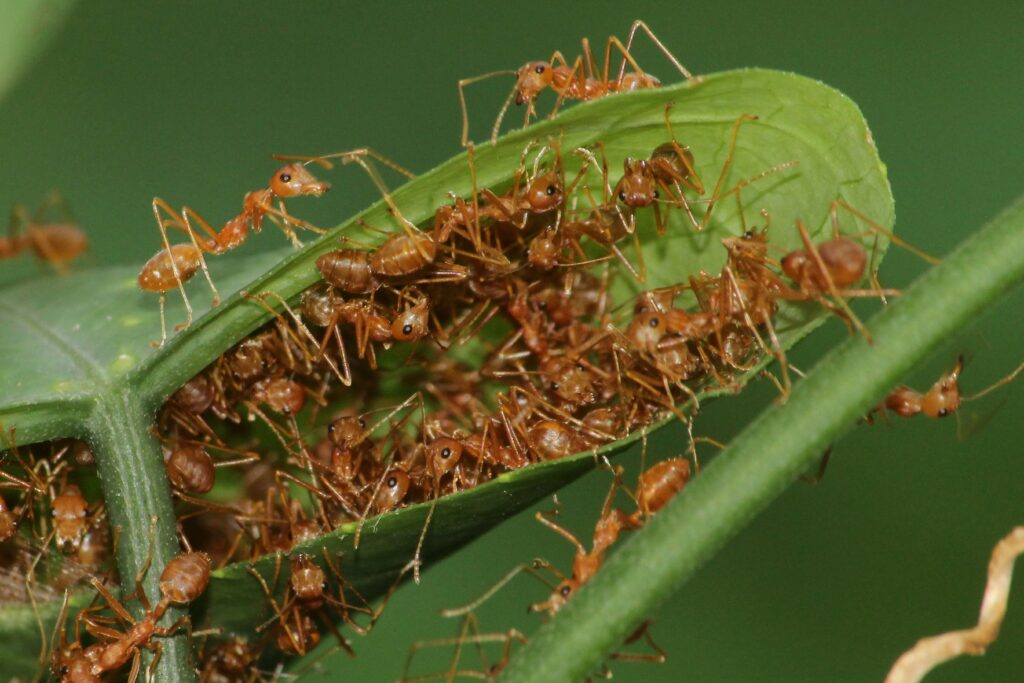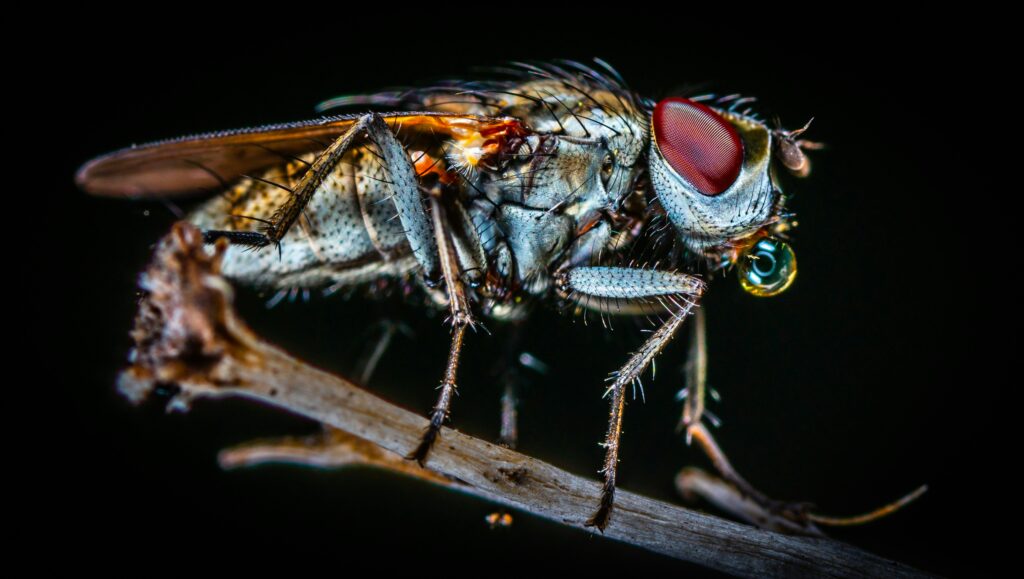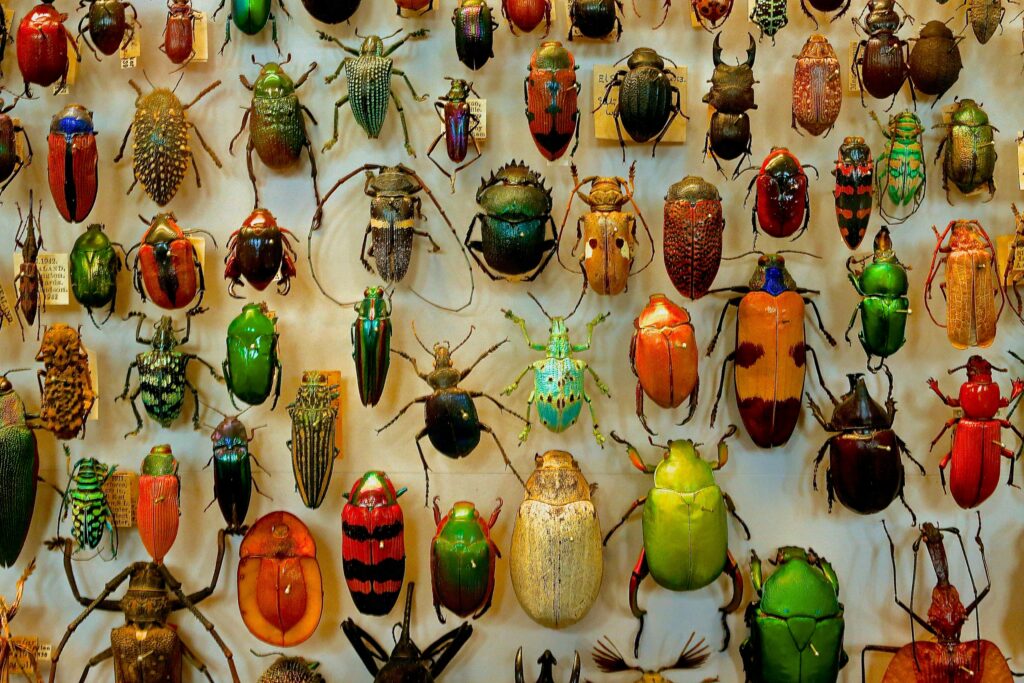In the miniature world of insects, a revolution is underway – not visible to the naked eye, but transforming our understanding of these six-legged creatures that dominate our planet. Scientists armed with advanced genetic tools are decoding the blueprint of insect life, revealing mysteries that have remained hidden for millions of years. Insect genomes, once inaccessible black boxes, are now open books telling evolutionary tales, explaining remarkable adaptations, and offering solutions to human challenges. From disease-carrying mosquitoes to essential pollinators and agricultural pests, understanding insect genetics is providing unprecedented insights into their biology and behavior. This genetic revolution is not just academic – it promises practical applications in medicine, agriculture, and conservation that could reshape our relationship with the most diverse animal group on Earth.
The Dawn of Insect Genomics

The journey into insect genomics began in earnest with the sequencing of the fruit fly (Drosophila melanogaster) genome in 2000, a landmark achievement that provided the first comprehensive look at the genetic makeup of an insect. This pioneering work laid the foundation for what would become an explosion in insect genomic research over the following decades. Prior to this breakthrough, scientists had limited tools to understand the genetic basis of insect biology, relying primarily on classical breeding experiments and rudimentary molecular techniques. The advent of next-generation sequencing technologies dramatically reduced both the cost and time required to sequence entire genomes, making it possible to extend genetic studies beyond model organisms like the fruit fly to thousands of insect species. Today, the i5k Initiative aims to sequence 5,000 arthropod genomes, creating an unprecedented resource for understanding the genetic diversity of insects and their relatives.
Size Matters: The Surprising Complexity of Tiny Genomes

One of the most striking discoveries in insect genomics is the remarkable variation in genome size and organization across different species. Insect genomes are generally compact compared to vertebrates, with the smallest being just 90 million base pairs (found in the Antarctic midge), while the largest can exceed 16 billion base pairs (in some grasshoppers). This size variation doesn’t necessarily correlate with organism complexity or evolutionary advancement, challenging traditional assumptions about genome evolution. Many insects achieve remarkable biological sophistication with relatively small genomes, demonstrating extraordinary genetic efficiency. Scientists have discovered that despite their small size, insect genomes contain sophisticated gene regulatory networks that control complex behaviors, metamorphosis, and specialized adaptations. The compact nature of many insect genomes has made them valuable models for understanding how genetic information can be efficiently organized and expressed.
Metamorphosis: Genetic Orchestration of Radical Transformation

Perhaps no aspect of insect biology is more dramatic than metamorphosis, and genomic studies have begun to unravel the genetic mechanisms behind this extraordinary process. Complete metamorphosis – the transformation from egg to larva to pupa to adult – involves a precisely coordinated genetic program that essentially rebuilds the insect’s body. Researchers have identified key hormones like ecdysone and juvenile hormone that trigger cascades of gene expression, activating and deactivating thousands of genes in a specific sequence. Through comparative genomics, scientists discovered that the genes controlling metamorphosis evolved from more ancient developmental pathways over hundreds of millions of years. Remarkably, some genes active during metamorphosis have been repurposed from ancient stress-response systems, showing how evolution can co-opt existing genetic machinery for new functions. Recent CRISPR gene editing studies have allowed researchers to manipulate these pathways, demonstrating their essential role in coordinating the dramatic developmental transitions seen in butterflies, beetles, and flies.
The Molecular Basis of Insect Adaptations

Insects have conquered nearly every habitat on Earth, from scorching deserts to freezing mountain peaks, and genomic studies are revealing the genetic innovations that make this adaptability possible. The genome of the Antarctic midge, for instance, shows significant gene family reductions and modifications that help it survive in extreme cold, including the elimination of certain stress-response genes that would be essential in other insects. Desert-dwelling insects often show genomic adaptations for water conservation, including expanded families of genes involved in producing protective waxes that prevent dehydration. In aquatic insects like mosquito larvae and diving beetles, genomic studies have identified specialized gene families that enable underwater respiration and osmoregulation in freshwater environments. Perhaps most remarkably, genomic analysis of high-altitude insects from the Himalayas has revealed adaptations in oxygen-binding proteins and metabolic pathways that parallel those seen in high-altitude mammals, a striking example of convergent evolution at the genetic level.
Disease Vectors: Genomic Insights into Deadly Carriers

Some of the most intensively studied insect genomes belong to species that transmit human diseases, with mosquitoes leading the research effort due to their role in spreading malaria, dengue, Zika, and other devastating illnesses. The genomes of Anopheles gambiae (the primary malaria vector) and Aedes aegypti (which transmits dengue and Zika) have revealed complex detoxification systems that help these mosquitoes develop resistance to insecticides, explaining why chemical control methods often lose effectiveness over time. Genetic studies have identified specific receptor molecules that allow mosquitoes to track human hosts through chemical cues like carbon dioxide and body odor, providing potential targets for new repellent technologies. Perhaps most promising are discoveries about the mosquito immune system, which naturally limits the replication of the parasites and viruses they transmit, opening avenues for genetic modifications that could prevent disease transmission entirely. Comparative genomics between vector and non-vector species has highlighted the genetic factors that make certain insects efficient disease carriers, knowledge that is crucial for developing targeted control strategies.
Pollinators Under the Microscope: Bee Genomics and Conservation

The genomic study of bees has taken on particular urgency as these essential pollinators face multiple threats worldwide, from pesticides to habitat loss and disease. The honey bee (Apis mellifera) genome, sequenced in 2006, revealed surprising insights, including fewer genes for detoxification enzymes compared to solitary insects, potentially explaining their heightened sensitivity to certain pesticides. Genomic studies of colony collapse disorder have identified multiple interacting factors, including viruses and parasites that trigger immune responses visible at the genetic level, providing early warning systems for bee health monitoring. Comparative genomics across different bee species has illuminated the evolution of social behavior, showing how genes controlling brain development, communication, and division of labor have been modified from solitary ancestors. Perhaps most importantly for conservation, genetic studies have revealed concerning losses of genetic diversity in many bee populations, identifying priority areas for conservation efforts and guiding breeding programs aimed at increasing resilience in managed bee colonies.
Agricultural Pests: The Genetic Arms Race

The genomic revolution has provided unprecedented insights into agricultural pests, revealing the genetic basis for their destructive capabilities and their remarkable ability to adapt to control measures. Genome sequencing of major crop pests like the Colorado potato beetle and fall armyworm has exposed expanded families of digestive and detoxification genes that allow these insects to overcome plant defenses and agricultural pesticides. Particularly concerning are the genetic mechanisms behind pesticide resistance, where researchers have identified specific mutations that can render entire classes of insecticides ineffective, sometimes after just a few years of use. Comparative genomics between closely related pest and non-pest species has helped identify the genetic factors that make certain insects particularly damaging to agriculture, including genes involved in host plant recognition, detoxification of plant defense compounds, and reproductive capacity. These genomic insights are driving the development of more sustainable approaches to pest management, including RNA interference (RNAi) techniques that can specifically target pest species while minimizing impacts on beneficial insects.
Social Insects: Decoding the Genetic Basis of Complex Societies

The genomes of social insects like ants, termites, and certain bees and wasps are providing extraordinary insights into one of the most complex forms of biological organization on our planet. Genome comparisons between solitary and social insects have revealed that the evolution of sociality often involves changes in gene regulation rather than the evolution of entirely new genes, with existing genes being repurposed for new social functions. Epigenetic mechanisms, which modify gene expression without changing the DNA sequence, appear particularly important in social insects, allowing genetically identical individuals to develop into radically different castes like workers, soldiers, and queens. Studies of the honey bee genome showed that methylation patterns – chemical tags on DNA that affect gene expression – differ between worker and queen bees despite their identical genetic material, demonstrating how diet during development can trigger alternative developmental pathways. In ants, genomic research has revealed that colony recognition systems, which allow ants to distinguish nestmates from intruders, are controlled by complex interactions between genes for chemical detection and communication.
Evolutionary Insights: Insects as Ancient Innovators

Insect genomes are providing unprecedented windows into evolutionary history, revealing the genetic innovations that allowed these creatures to become Earth’s most diverse animal group. Comparative genomics has helped establish that the ancestor of all insects lived approximately 480 million years ago, with major diversification occurring during the Carboniferous period when insects evolved flight – the first animals to do so. Genetic evidence suggests that many key insect innovations, including compound eyes, segmented bodies, and specialized mouthparts, evolved through the duplication and specialization of ancient genes that took on new functions. The genomic basis for insect wings appears to have evolved from existing gill-like structures in aquatic ancestors, with a specific set of developmental genes being repurposed to create these entirely new appendages. Perhaps most fascinating is the evidence for massive horizontal gene transfers in some insect groups, where genes from bacteria, fungi, and even plants have been incorporated into insect genomes, providing novel functions like the ability to digest plant cellulose in termites or synthesize carotenoid pigments in aphids.
Gene Editing Technologies: CRISPR and Insect Research

The development of CRISPR-Cas9 gene editing technology has revolutionized insect genomics, allowing researchers to precisely modify insect DNA and directly test the function of specific genes. This technology has proven particularly valuable in non-model insects that were previously difficult to study genetically, enabling researchers to investigate species of agricultural importance, disease vectors, and endangered pollinators with unprecedented precision. In disease vectors like mosquitoes, CRISPR has enabled the development of gene drive systems that can potentially spread malaria-resistance genes throughout wild populations, offering a revolutionary approach to disease control. Agricultural applications include the development of more targeted pest management techniques, including the creation of sterile insect populations that can collapse pest numbers without pesticides. Beyond applied uses, CRISPR is accelerating basic research by allowing scientists to create precise genetic modifications to test hypotheses about insect development, behavior, and physiology. The technology has also raised important ethical questions about the release of genetically modified insects into the environment, prompting ongoing discussions about appropriate safeguards and regulatory frameworks.
Microbiomes and Metagenomics: The Extended Insect Genome

Modern genomic research has expanded beyond the insect’s own DNA to include the communities of microorganisms that live within and upon insects, revealing complex relationships that blur the boundaries between host and symbiont. Many insects have evolved obligate relationships with bacterial partners that provide essential services, such as Buchnera aphidicola bacteria that synthesize essential amino acids for aphids, allowing these insects to survive on the nutritionally poor plant sap diet. In some cases, these relationships are so ancient and intimate that the bacterial genomes have dramatically reduced in size, retaining only genes essential for their specialized roles within the insect host. Termites and wood-feeding cockroaches harbor complex gut microbiomes containing bacteria, archaea, and protists that collectively provide the enzymes needed to digest cellulose, effectively extending the insect’s metabolic capabilities through their microbial partners. Perhaps most surprisingly, recent metagenomic studies have revealed that many insect behaviors previously attributed to the insect itself may be influenced by their microbiomes, including mate selection in fruit flies and aggregation behaviors in locusts, suggesting that the traditional concept of an individual insect may need to be expanded to include its microbial partners.
The Future of Insect Genomics: Challenges and Opportunities

As insect genomics enters its third decade, researchers face both daunting challenges and extraordinary opportunities that will shape the field’s future. One major frontier is the functional characterization of the millions of genes identified through sequencing projects, as determining what these genes actually do requires sophisticated techniques beyond DNA sequencing itself. Technological advances in single-cell sequencing promise to revolutionize our understanding of how genes function in specific tissues and developmental stages, potentially revealing how the same genome can produce dramatically different phenotypes during metamorphosis. Perhaps the most ambitious goal is to sequence representatives from all major insect lineages, creating a comprehensive genomic tree of life that would illuminate the genetic basis of insect diversity and adaptation across evolutionary time. Climate change adds urgency to these efforts, as understanding how insect genomes respond to environmental stress could help predict and mitigate disruptions to ecosystems, agriculture, and human health. As costs continue to fall and technologies improve, insect genomics is likely to extend beyond the laboratory to field applications, including real-time monitoring of insect populations and rapid identification of invasive species through portable DNA sequencing devices.
In the span of just two decades, insect genomics has transformed from a specialized field focused on a few model species into a comprehensive effort to understand the genetic underpinnings of Earth’s most diverse animal group. These tiny creatures, often overlooked despite their ecological and economic importance, are revealing genetic innovations and adaptations that have allowed them to thrive in nearly every environment on our planet. As researchers continue to decode more insect genomes and develop new tools to understand gene function, the insights gained will extend far beyond entomology, touching fields from medicine to agriculture, conservation, and evolutionary biology. The genetic secrets of insects, accumulated over 480 million years of evolution, represent not just scientific curiosities but potential solutions to some of humanity’s most pressing challenges. By understanding the genetic blueprint that makes insects such successful organisms, we gain not only appreciation for their remarkable biology but also practical knowledge that may help ensure both their survival and our own in an uncertain future.

